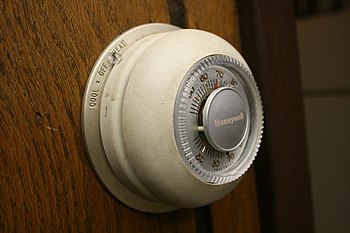 |
| A unique energy-efficient home built in place of a historic house in 2009 by BuildSense at 930 West Markham Avenue in Trinity Park, Durham, North Carolina. (Photo credit: Wikipedia) |
Going about a home energy audit is one smart way of cutting the utility bills that you pay for at the end of every month. Many people tend to forget about the parts of their homes that might be causing the rise in home energy consumption. One fact that you must learn to take note of is that the home appliances that you possess, although they are switched off and not in use, still consume energy because of the phantom loads that they create. Examples of these are the VCRs, stereo components, microwave oven, toasters, and stoves.
Although they are turned off, they still consume energy. How much more when you total their consumptions in a day and then for the entire month? Likewise, the remote-controlled devices are always put on a ready mode. Such a state of readiness also consumes home energy. Apart from these concerns, the parts of the home contribute to the escalating home energy consumptions. Among these are the attics, fireplaces, and the rest of the less obvious parts of the house.
The General Purpose of the Home Energy Audit
Why is a home energy audit recommended by the experts? What is this process devoted to? For everyone’s clear understanding, the ultimate purpose of the home energy audit is the making possible of the efficiency in the energy utilized in the home. When the home energy used is maximized and securely utilized, there will be the most possible reduction of the utility bills today and the succeeding years to come.
A home energy audit will work best for homeowners who are confronted with very large electric bills. In fact, conducting the needed home energy audit will let you save thousands of dollars in the upcoming years. Stop dwelling on the windows and doors you have at home for they are obvious spots that let you lose much home energy. Why not look into the less obvious spots like the attic, the ceilings, and the fireplace?
Most homeowners put away their unused things and keep them in the attic. Sure, the attic is a great place to store your junked stuff. But then didn’t you ever glance at your attic and consider the renovation of it so that there will be proper insulation in there? You may indeed throw out big bucks for its improvement but it will do your attic good, so to speak. The attic must be installed with open-air vents so as to keep up good air circulation. When there is no proper air circulation in the attic, the utmost tendency is for the roofing and the stored stuff in the attic to get destroyed.
Now take into consideration the ceiling you’ve got at home. It must have enough insulation so that the home energy will be kept from escaping from it and to go upwards to the attic. The easiest way for heat to transfer into the attic is through a hole in the ceiling.
Also, take a good look at the fireplace. When the concern of regulating and controlling the temperature inside the home comes in, the fireplace is the most difficult spot to cover. As the design of the fireplace is concerned, it is particularly aimed at moving the smoke out of the interior environment of the home.
The process is known as the propulsion of the heat. But then the main problem is that whenever the fireplace is not in use, it still goes on with the propulsion of the heat towards the exterior borders of your home.
If you are serious with your intention of cutting back your home energy costs, a home energy audit will be best.

